Inside Marco Lavit’s pocket-sized Milan bolthole
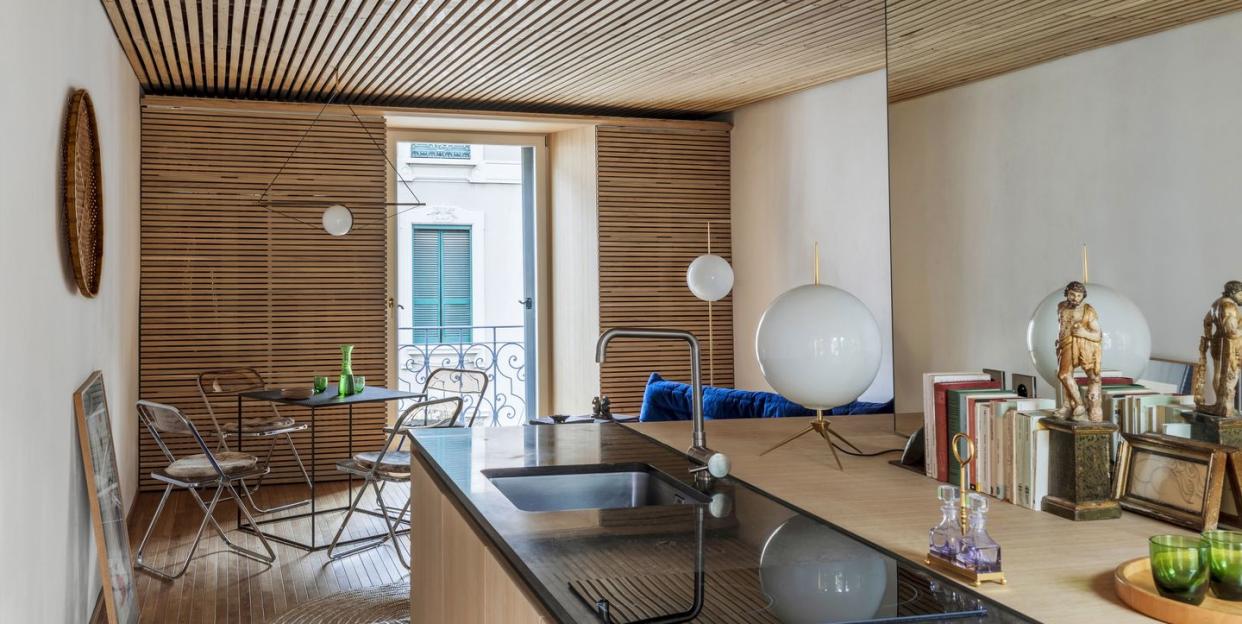
Known as one of the most significant proponents of eco-sustainable architecture working today, as well as for his highly collectible furniture and lighting designs, Marco Lavit has long been a resident of Paris, where, after working under Riccardo Blumer and for the renowned studio LAN Architecture, he opened his own atelier in 2014. Paris is his home, but in recent years the designer found he was spending so much time in Milan he decided it would be useful to have a pied-à-terre there.
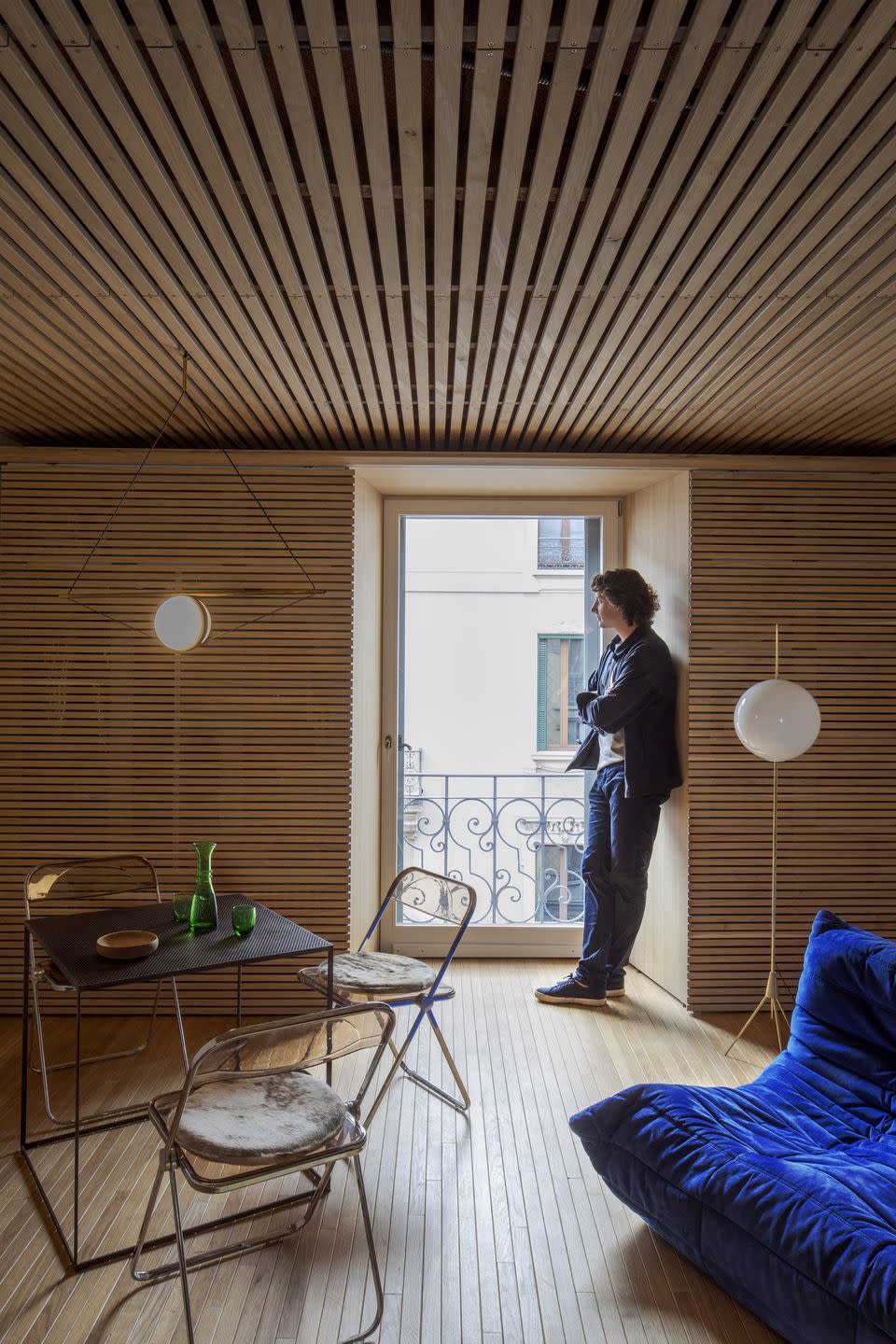
His search centred on the old suburb of Isola, close to the two main train stations. ‘It’s easy for me to come and go from Paris, and to travel to Rome, Venice, Naples...’ he explains, adding, ‘in my car I can easily access the many furniture production sites and the artisans in the Brianza district northeast of Milan. It’s a strategic central point, but also like a little village, which is very important to me.’
He found an apartment on the top floor of a typical 19th-century Milanese building. The mix of residents – ‘young creatives and old guys who can tell some stories!’ – appealed to him. The footprint was small but, with windows onto the street and the wisteria-covered internal courtyard, he was intrigued by its potential.
Marco opened up the traditional two-room layout to create a loft-like studio, allowing the sun to touch every part of his pocket-sized nest. ‘What was interesting for me as an architect is the quality of the light and of the space,’ he muses. ‘We reinterpreted it according to the modern way of living, which is universal but still very Milanese to me.’
The ceiling was taken down and clad with wooden slats: ‘it gives some warmth and character and you can have a projector, even speakers up there. You can also use it to hang paintings. It’s like a little theatre,’ he says.
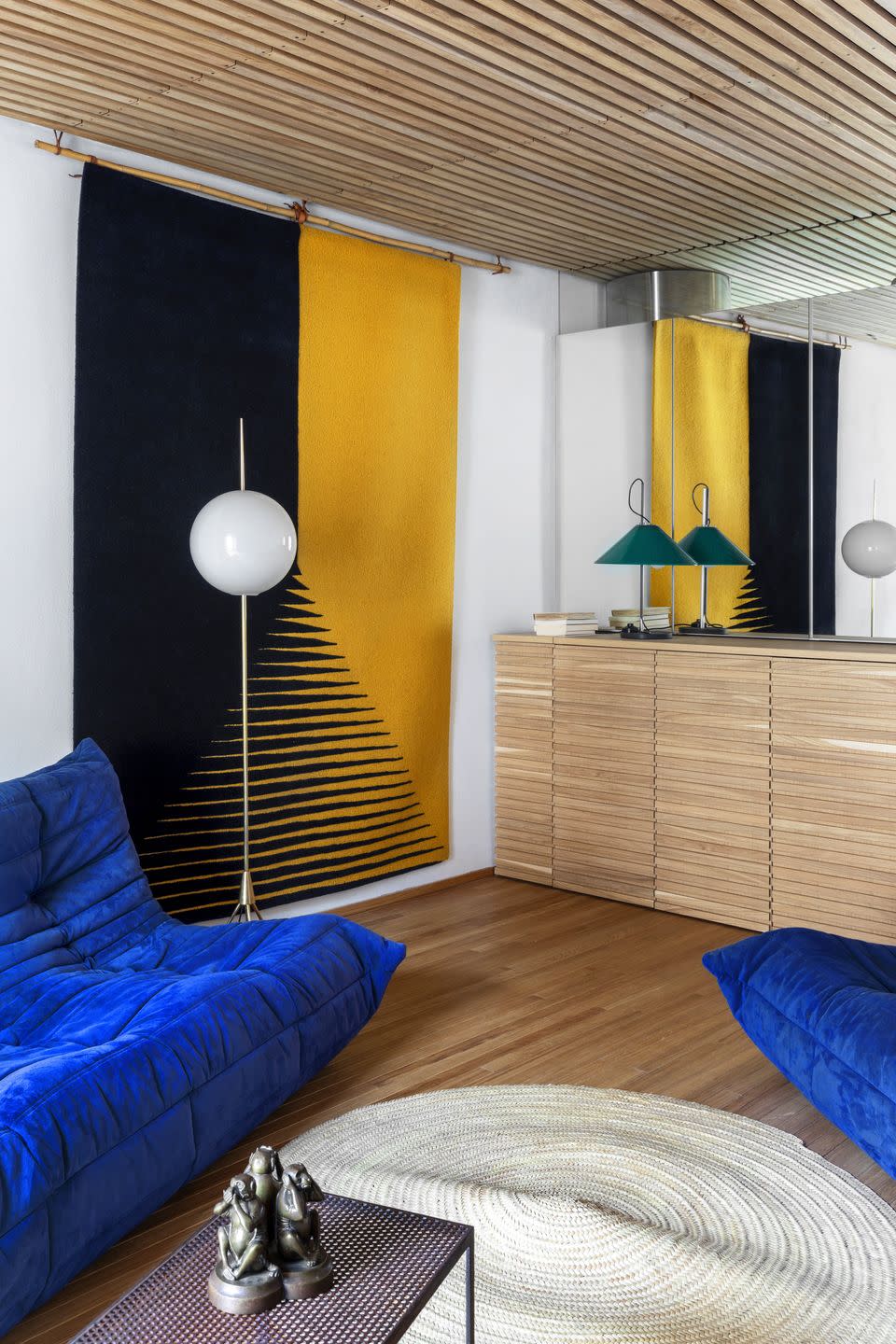
The materials palette is straightforward and honest: wood, mirror and Sicilian Nero d’Avola stone. Marco made the dimensions of the parquet floor the same as the wood on the ceilings and walls, which makes things feel calm and coherent. Mirrored walls have a distorting effect ‘so you don’t really understand how the space is organised,’ he says, adding ‘we use it to hide the bathroom. You just get all the materials and the light reflected on the walls.’
This tiny apartment is never going to hold a big crowd, but that’s fine by Marco – he likes nothing more than having a couple of friends over for a coffee or aperitivo, which he prepares in his favourite spot, the kitchen, overlooking the living room. ‘We use the “Togo” sofas that are quite low, you really lie down and you can enjoy the main windows towards the street.’
Most of the pieces are his own designs; ‘I’m always happy when I have a new space to fill up with prototypes!’ he laughs. ‘Sometimes I send them to a brand or a gallery to produce, so they’re changing all the time.’
At home and at work, Marco loves wood for its versatility. ‘It has this capacity to adapt itself to the weather, to the water,’ he says. ‘You can do complicated little details or use it as the main structure of a huge pavilion.’
He loves how this natural material evolves in colour, texture and even smell. ‘If you’re able to accept and understand the beauty of these changes then you will be able to imagine thousands of possibilities. It’s not about decoration, it’s about the essence of the structure,’ he declares.
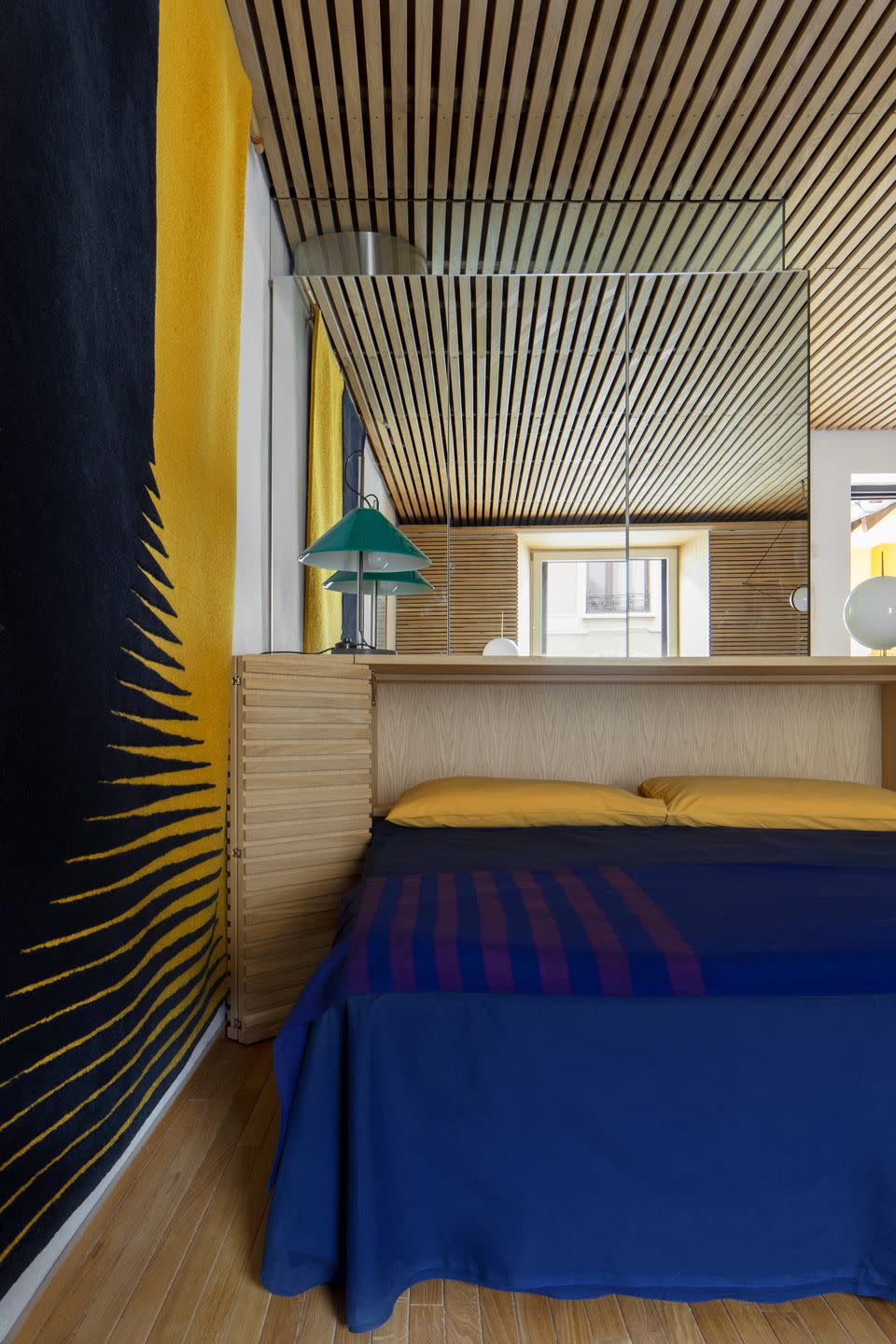
Lavit works in two different ‘universes’– furniture design and architecture – and is critically acclaimed in both. In 2022, his ‘Lemni’ armchair for Living Divani won an EDIDA and its elegant, pared-back design perfectly encapsulates his philosophy, which makes no distinction between work on objects or buildings.
He relishes a challenge; right now he’s preparing seating and lighting collections for MDF Italia and Living Divani that will preview at this year’s Salone del Mobile – the two toughest categories for a designer to master in his opinion, because ‘lights are not just objects, it’s about changing the atmosphere of a place, and seats are complicated because being comfortable is not easy’.
His studio is also developing hospitality projects in France and Italy – more of the eco lodges and hotels surrounded by nature that he is known for.
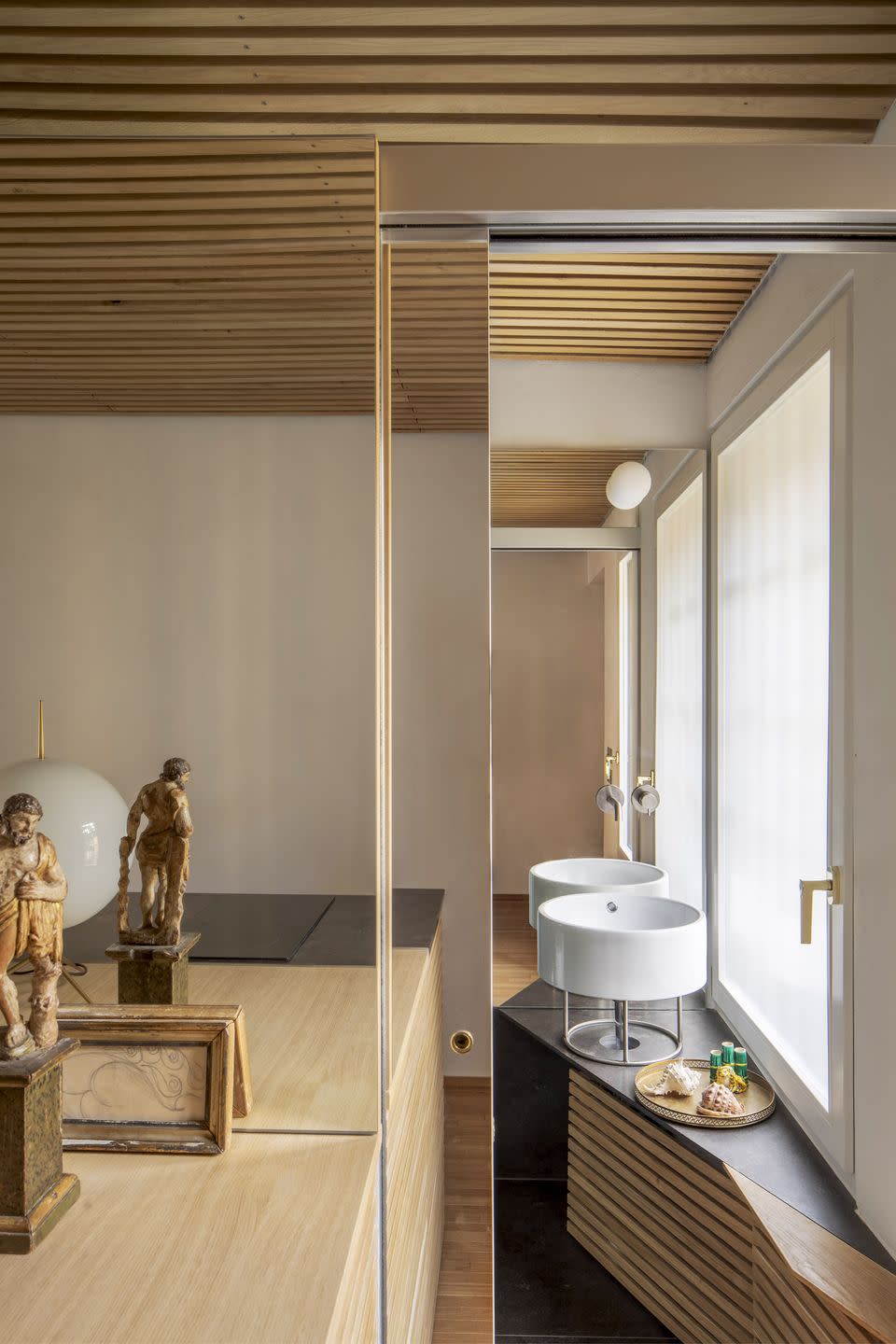
Perpetually busy, Marco cherishes the cosy quiet of his Milanese bolthole, which is too small for practical work but perfect for the contemplative thinking that is vital to his process. ‘It’s something I notice in my atelier in Paris: there is always a particular corner where you can be productive, and other places where you don’t feel quiet at all,’ he says. ‘I feel able to arrive in Milan for two days and focus, work intellectually, draw, write and think.’
This contemplative approach is rooted in Marco’s design background; he studied architecture in Paris at the L’Ecole Spéciale d’Architecture, an institution with a focus on the conceptual rather than the technical.‘That’s something that’s still key to my practice,’ he says. ‘I’m interested in thinking about problems and solutions, whether it’s a space, material or technical project.’
He applies this approach to every project, never compromising his vision. It’s why, he believes, his clients seek him out. ‘They callus because they know our mode of working and they want to do things our way.’ His studio takes on work of all sizes, creating everything from floating wooden cabins to treehouses and urban ‘nests’ like his own.
‘We don’t like to repeat the same kind of projects or processes,’ he explains, admitting that doing things differently every time isn’t necessarily the easiest way to operate. The variety, though, and the unknown, is what fuels his creativity. ‘It’s more exciting – I prefer experimentation. Sometimes you have to learn while you’re doing.’ atelier-lavit.com


